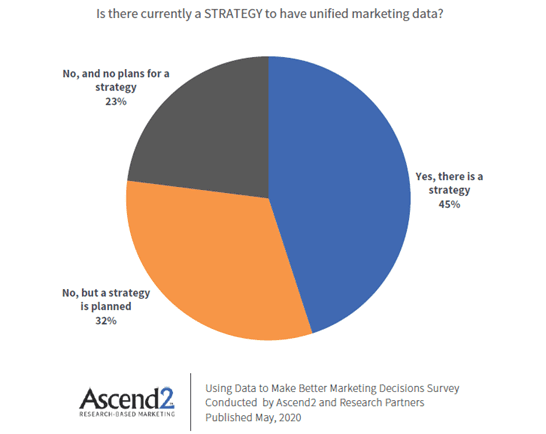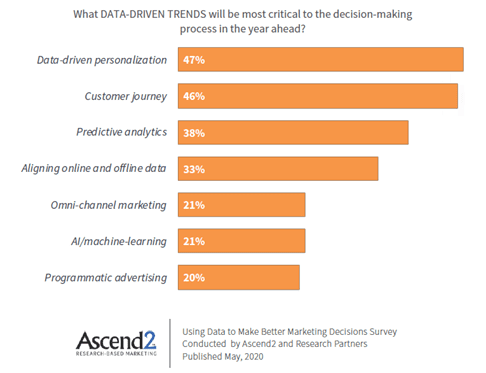Thank you to Todd Lebo, Partner and Chief Marketing Officer at Ascend2, for this guest blog post!
Most marketers today would agree that it is reckless and risky to make decisions without data and research to guide and influence that decision. Modern marketers are willing to dig through data to find answers to critical questions. If the data isn’t available (conversion rate, cost-per-conversion, engagement rates, customer lifetime value, multi-touch attribution, funnel/pipeline, etc.), a savvy marketing professional will work tirelessly to figure out how to get the data.
Without data, you can’t tell what works, what doesn’t work, or how to prioritize programs and tactics.
A new research report by Ascend2, entitled Using Data to Make Better Decisions, takes a closer look at how companies are using marketing data to make better decisions. This article will examine a few of the key findings from the research and provide some practical tips for applying those findings in your marketing department.
Finding #1: Unified marketing data is a work in progress.
Using data-based insights to make better marketing decisions requires a comprehensive view of existing and incoming data. Only 45 percent of the companies surveyed are operating with a unified marketing data plan in place. That means take 55 percent do not have a plan in place. That is a risky situation.
How do you eliminate data silos and have unified marketing data? Start by creating a more collaborative company culture. Make it easier for employees to want to share data with people outside their teams. Next, sort through the data that you have and determine what is current, what is outdated and what is needed. Now you are ready to develop your strategy to unify the data.
Finding #2: Which data is most helpful?
Too much data, without clarity on the data that matters most, can cause confusion and indecisiveness. Nearly half (47 percent) of marketers agree that engagement data is most valuable in making strategic decisions.
What is shocking is that multi-touch attribution and funnel/pipeline data is at the bottom of the list. Both are extremely helpful in making better decisions. Most marketers would acknowledge that both are necessary to make better decisions. So why are both at the bottom of the list? My best guess is that marketers struggle to get that data, so they are not using it to make decisions. That is a big mistake.
To set up a specific analysis like multi-touch attribution or funnel/pipeline analysis, you will need to look at your entire process of what data you collect, how you tag data, how you store data and how you visualize the data. The work that goes into this will pay for itself with better decisions.
Finding #3: Data-driven trends.
When it comes to evidence-based tactics trending among marketers, those centered around user experience are viewed as most critical to the decision-making process in the year ahead.
The first two, data-driven personalization and customer journey are all about your audience. The more you know about them, the better you can personalize the experience. With a personalized experience, you can streamline the customer journey and dramatically improve conversion rate and sales.
Interested in learning more on this topic? Download the full Ascend2 report to get more information on primary objectives, critical challenges, budget trends and more.










